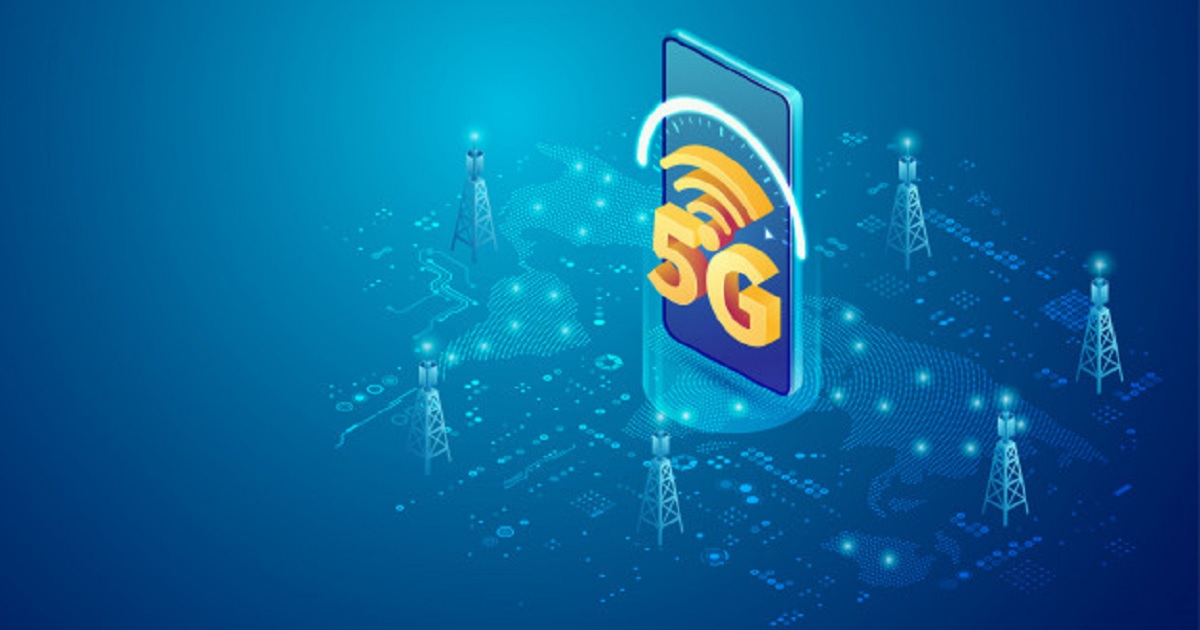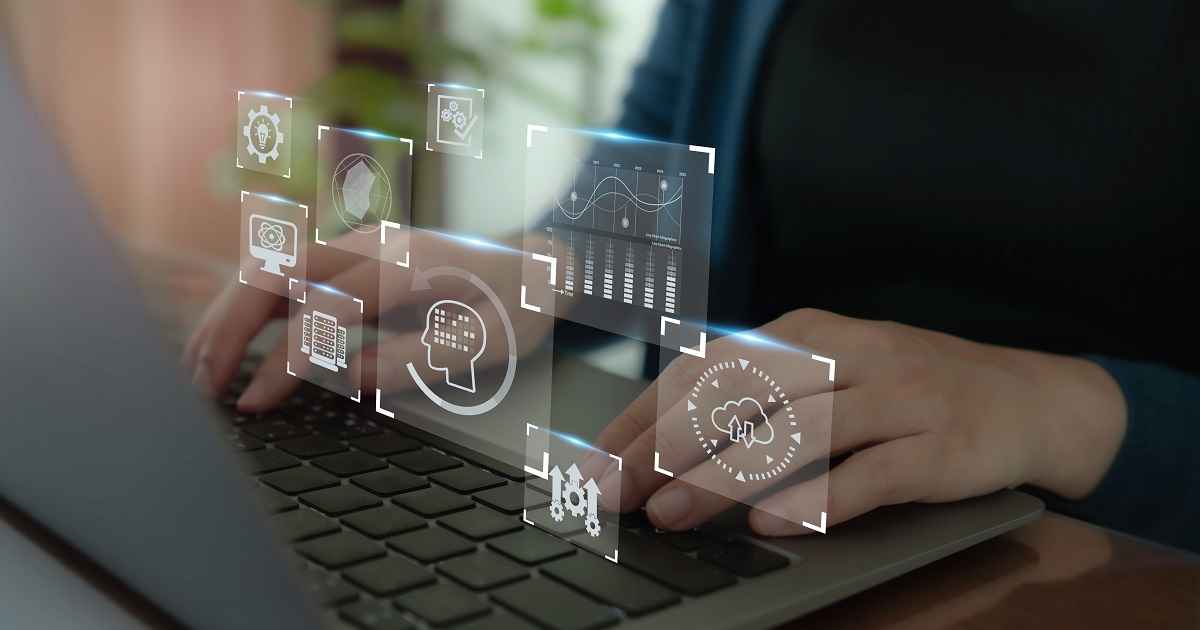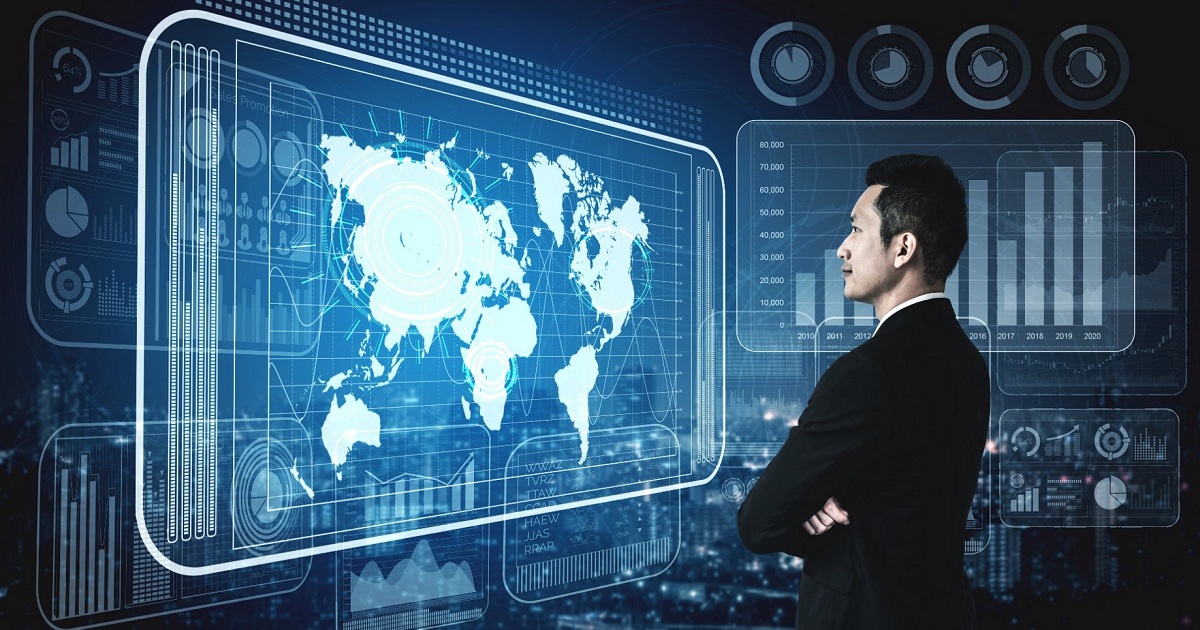
IoT Security
Article | June 28, 2023
The year 2020 was supposed to be a breakthrough year for many technologies but, most businesses have now been forced back into building an infrastructure to transit their workforce to work remotely and ensure continuity of workflow. Nevertheless, an unprecedented set of events have pushed several industries to accelerate the adoption of technologies as they continue to work from home.
5G and Wi-Fi 6 are two tech advancements that have been turning eyes around the world since their introduction. The two wireless technologies are well on their way to revolutionize the Internet of Things as businesses move fast towards digitization and the world is excited.
Table of Contents:
- Wi-Fi 6: A Breakthrough in Wireless Technology
- 5G: For a Better Connected World
- How are Wi-Fi 6 and 5G Transforming the IoT?
- 5G and Wi-Fi 6: Rivals or Allies?
Wi-Fi 6: A Breakthrough in Wireless Technology
The next-generation Wi-Fi with boosted speed was introduced last year to meet the demand for faster internet amongst the rising internet users. But, Wi-Fi 6 is simply more than a tweak in the speed.
Technically called 802.11ax, Wi-Fi 6 is the advancement in the wireless standard doing the same basic things but with greater efficiency in the device-dense areas, and offering much greater bandwidth than its predecessor 802.11ac or Wi-Fi 5. Wi-Fi 6 promises a speed up to 9.6 Gbps up four times than that of Wi-Fi 5 (3.5Gbps). In reality, this is just a theoretical maximum that one is not expected to reach. Even still, the 9.6Gbps is higher speed and doesn’t have to go to a single device but split up across a network of devices.
A new technology in Wi-Fi 6 called the Target Wake Time (TWT) lets routers set check-in times with devices, allowing communications between the router and the devices. The TWT also reduces the time required to keep the antennas powered to search for signals, which in turn also improves battery life.
Wi-Fi 6 also comes with a new security protocol called WPA3, making it difficult to hack the device passwords by simple guesswork.
In short, Wi-Fi 6 means better speeds with optimized battery lives, and improved security.
5G: For a Better Connected World
5G is the next in line to replace 4G LTE. While Wi-Fi covers small scale internet requirements, cellular networks like 5G are here to connect everyone and everything virtually on a larger scale.
The technology is based on the Orthogonal frequency-division Multiplexing (OFDM) that reduces interference by modulating a digital signal across several channels. Ability to operate in both lower bands (like sub-6 GHz) and mmWave (24 GHz and above), 5G promises increased network capacity, low latency and multi-Gbps throughput. 5G also uses the new 5G NR air interface to optimize OFDM to deliver not just better user experience but also a wider one extending to many industries, and mission-critical service areas.
The 5G technology, in a nutshell, has brought with it ultra-high speeds, increased and scalable network capacity, and very low latency.
How are Wi-Fi 6 and 5G Transforming the IoT?
5G and Wi-Fi 6 will fill up the speed gaps that our existing networks are not able to especially, in crowded homes or congested urban areas. It's not just about the speed. The two wireless technologies will increase network capacity and improve signal strengths.
On the business front, 5G and Wi-Fi 6 are both living up to the hype they created since their introduction.
Wi-Fi 6 has emerged, as the enabler of converged IoT at the edge. It has put IT into OT applications, connected devices and processed data from devices such as IP security cameras, LED lighting, and digital signage with touch screen or voice command. Wi-Fi 6 can now be used in office buildings for intelligent building management systems, occupancy sensors, access control (smart locks), smart parking, and fire detection and evacuation.
It’s (Wi-Fi 6) built for IoT. It will connect many, many more people to mobile devices, household appliances, or public utilities, such as the power grid and traffic lights. The transfer rates with Wi-Fi 6 are expected to improve anywhere from four times to 10 times current speeds, with a lower power draw, i.e. while using less electricity.
- Tom Soderstrom, IT Chief Technology and Innovation Officer at NASA’s Jet Propulsion Laboratory (JPL)
Similarly, 5G will open doors for more devices and data. It will increase the adoption of edge computing for faster data processing close to the point of action. The hype around 5G is because of the three key attributes it comes with: enhanced mobile broadband (eMBB), ultra-reliable low-latency (uRLLC), and massive IoT device connectivity (mMTC). But there is the fourth attribute that sets it apart from its predecessor: use of a spectrum that operates at the low-end frequency range (typically 600 MHz). Called as ‘low-band 5G’, it delivers high speeds with signals that go for miles without propagation losses and ability to penetrate obstacles. The 5G operates in the new millimetre-wave bands (24 to 86 GHz) delivering more capacity to enable many low-power IoT connections.
If we were to point down the benefits, these two wireless technologies are bringing to the Internet of Things those would be:
Increased Human-Device Interactions
Increased Data and Devices
More IoT investments
Advancing to the Edge
Acceleration towards Industrial IoT
Enhanced use of IoT devices
Better VUI
5G and Wi-Fi 6: Rivals or Allies?
In February, Cisco estimated that by 2023 M2M communications will contribute to 50% or about 14.7 billion of all networked connections. Cisco’s Annual Internet Report reveals that 5G will enable new IoT applications with greater bandwidth and lower latencies and will accelerate innovations at scale. The same report estimates that 10.6% of global mobile connections in 2023 will be 5G, while Wi-Fi 6 hotspots will be 11.6% of all public Wi-Fi hotspots growing 13 times from 2020 through 2023.
Wi-Fi6 will serve as a necessary complement to 5G. A significant portion of cellular traffic is offloaded to Wi-Fi networks to prevent congestion and degraded performance of cellular networks (due to demand).
- Thomas Barnett, Director of Thought Leadership, Cisco Systems
The two technologies are here to feed different data-hungry areas with gigabit speeds.
With lower deployment costs, Wi-Fi 6 will be dominating the home and business environments where access points need to serve more users covering devices like smartphones, tablets, PCs, printers, TV sets, and streaming devices. With an unlicensed spectrum, the performance of Wi-Fi 6 depends on the number of users, that are using the network at the same time.
5G, with its longer range, will deliver mobile connections and accelerate smart city deployments and manufacturing operations. Like LTE, 5G speeds will depend upon users’ proximity to base stations and the number of people using that network.
The performance of the two depends largely on the area where they are being deployed. For instance, Wi-Fi can very well handle machine-to-machine communications in a managed manufacturing unit, whereas 5G can enhance campus-wide manufacturing operations efficiently. Businesses will have a decision to make which among the two wireless networks fulfils their data appetite.
In conclusion, the two wireless technologies continue to develop in parallel and causing the next big wave in the Internet of Things.
Read More

Enterprise Iot
Article | July 20, 2023
For businesses, the transformative power of IoT is increasingly significant with the promise of improving operational efficiency and visibility, while reducing costs.
However, IoT does not come without risks and challenges. While concerns over security and data privacy continue to rise, the lack of IoT standards remains one of the biggest hurdles. The increasing number of legacy, single-vendor, and proprietary solutions cause problems with disparate systems, data silos and security gaps. As IoT successes become more dependent on seamless interoperability and data-sharing among different systems, we want to avoid the scenario of a fragmented market with numerous solutions that simply don’t work with each other.
Read More

Security, IoT Security
Article | July 13, 2023
Explore the emerging complexities of IoT data governance with 7 key challenges to tackle. Address data privacy, security, and ethical concerns, empowering your business for success in 2023 and beyond.
Contents
1 The Case for Maintaining IoT Data Governance
2 Challenges of IoT Data Governance
2.1 Lack of Organizational Commitment
2.2 Data Privacy Concerns
2.3 Lack of Endpoint Security for IoT Devices
2.4 Issues with IoT Device Authentication
2.5 Increasing Volume of Unstructured Data
2.6 Unethical Use of IoT Data
2.7 Inadequate Data Governance Protocols
3 Addressing IoT Data Governance Challenges
3.1 Security by Design
3.2 Awareness Initiatives
3.3 Standardized Data Governance Policies
4 Conclusion
1 The Case for Maintaining IoT Data Governance
The growing use of IoT devices across various industries has caused a surge in data volume. Most of these devices store sensitive company data, which plays a crucial role in business operations but can have dire consequences if it falls into the wrong hands. Thus, companies need to understand what is IoT governance and its implementation to safeguard sensitive data from unauthorized access and malicious exploitation.
2 Top Challenges in IoT Data Governance for Businesses
2.1 Lack of Organizational Commitment
Organizational commitment is essential for effective IoT data governance. There needs to be a clear purpose and goals regarding data governance that are communicated to all stakeholders. Not focusing on organizational commitment can result in a lack of alignment between the organization's goals and the IoT data governance strategy, as well as uncertainty about ownership and accountability for data governance across the organization.
2.2 Data Privacy Concerns
Ensuring data privacy is a significant concern when implementing IoT data management to maintain IoT data governance security. With the vast amount of data generated by IoT devices, there is an increased risk of personal and sensitive data being compromised. Therefore, it is crucial to identify potential vulnerabilities, mitigate the risk of data privacy breaches in IoT environments, and anonymize user data for consumer devices.
2.3 Lack of Endpoint Security for IoT Devices
IoT devices are often designed with limited processing power and memory, and as such, many connected devices do not have built-in security features. This makes them attractive targets for hackers seeking to access confidential data or disrupt operations. Without proper endpoint security measures, IoT devices can be compromised, leading to data breaches, network downtime, and other security incidents that can compromise the entire system's integrity.
2.4 Issues with IoT Device Authentication
When IoT devices are designed without proper authentication mechanisms, it can be challenging to verify their identities. This results in possible unauthorized access, data breaches, and other security incidents. To supplement IoT data management practices, companies must implement secure authentication protocols specifically designed for IoT environments, such as device certificates, digital signatures, and multi-factor authentication, to maintain IoT data governance.
2.5 Increasing Volume of Unstructured Data
IoT devices generate vast amounts of data in various formats and structures, including text, images, audio, and video, which can be difficult to process, manage, and analyze. This data is often stored in different locations and formats, making it challenging to ensure quality and consistency. Moreover, this flood of unstructured data can contain sensitive information that must be protected to comply with regulations and standards. For effective IoT data governance, it is necessary to implement data classification, metadata management, and data quality management to make sense of unstructured data.
2.6 Unethical Use of IoT Data
IoT devices collect data that can be sensitive and personal, and misuse can lead to various negative consequences. Data from IoT devices can be used to develop insights, but it must be handled carefully to avoid privacy violations, discrimination, or other negative consequences. Ensuring data ethics requires organizations to consider the potential impacts of their data collection and use practices on various stakeholders. This involves addressing issues such as data privacy, data ownership, transparency, and bias in IoT data analytics.
2.7 Inadequate Data Governance Protocols
Without proper data governance protocols, IoT data may be inaccurate, incomplete, or difficult to access or analyze, reducing the effectiveness of IoT systems and limiting the potential benefits they can provide. Additionally, inadequate data governance protocols can lead to security and privacy vulnerabilities, potentially exposing sensitive data to unauthorized access or theft. This can result in legal and regulatory penalties, reputational damage, and a loss of customer trust.
3 Addressing IoT Data Governance Challenges
3.1 Security by Design
This approach involves integrating security and governance considerations into the design and development of IoT systems from the outset. This helps minimize vulnerabilities, prevent breaches that may compromise the confidentiality, integrity, and availability of IoT data, and help maintain IoT data governance. In addition, by prioritizing security in the design phase, organizations can implement security controls and features tailored to their IoT systems' specific needs, which can help prevent unauthorized access, manipulation, or theft of IoT data.
3.2 Awareness Initiatives
IoT data governance challenges can arise due to an improperly trained workforce that may not recognize the purpose and benefits of data governance practices. Awareness initiatives can help organizations develop a culture of security and privacy. These initiatives can educate employees and stakeholders about the risks and best practices associated with IoT data governance, including the importance of data security, privacy, and ethical considerations. By raising awareness of these issues, organizations can promote a culture of responsible data management, encourage stakeholders to adhere to data governance policies and procedures, and reduce the risk of human error or intentional misconduct that could compromise IoT data.
3.3 Standardized Data Governance Policies
Collaboration between local, regional, and federal governments and businesses is essential to establishing frameworks for implementing IoT and related technologies within their jurisdictions. Cooperation between governments and enterprises is crucial for implementing a standardized IoT data governance policy. This will protect end-users by mandating basic standards in procurement processes and creating regulations and guidelines that promote responsible data governance.
4 IoT Data Governance: Future Outlook
Data is one of the most valuable resources for organizations today, and addressing the problem of IoT data governance will ensure that the IoT of enterprises is used effectively and responsibly. Straits Research reported that the worldwide data governance market had a worth of USD 2.1 billion in 2021 and is projected to reach an estimated USD 11.68 billion by 2030. IoT devices are a key driving factor behind the growth of the data governance market, and as the amount of data generated and the number of devices grows, so will the complexity of data governance. By maintaining strong data governance policies and tracking changes in policies and best practices, businesses can ensure compliance and maintain trust in the long run.
Read More

Article | January 29, 2021
The COVID-19 pandemic turned the tides towards remote work and virtual connectivity. And even though growth seemed to have slowed down in 2020, experts see double-digit growth in the next few years. The tides may be turning but virtual connectivity and the tools required for remote growth are not slowing down in demand. As the tech world adapts to new shifts, IoT is among one of the most anticipated technologies to prosper in 2021.
Digital transformation has rapidly accelerated in the past year and if the experts are to be believed, 2021 shows promise for an even better year for technological advancement. According to IDC’s 2020-2024 forecast, spending will reach an annual growth rate of 11.3 percent. And with this, the number of connected devices is likely to grow up. Take a look at what will be the focus of IoT industry trends in 2021.
Privacy & Security
As smart homes are becoming the norm and you cannot throw a stone without hitting a smart device, one thing is clear—IoT devices are everywhere. People almost always forget smartphones when talking about IoT devices, but the fact is that smartphones are very much a part of the IoT ecosystem. And with the infusion of IoT in our everyday lives, questions about privacy and security are cropping up.
Just recently, as WhatsApp announced its new privacy policy, millions of users planned to migrate to other alternatives. This led to WhatsApp pushing back its privacy update and tech businesses taking note of changing winds.
In 2021, privacy and security will be at the forefront of IoT industry trends, as devices infuse further into the everyday lives of people. According to recent research, 90 percent of consumers lack confidence in IoT device security. And the onus of bolstering consumer confidence will be up to IoT businesses.
Workforce Management
According to Gartner’s “Top Strategic Technology Trends For 2021” report, IoT will be a large part of the office experience in 2021. As businesses are trying to avoid the losses that occurred in early 2020, workplaces are being geared up with RFID tags, sensors, and monitors to ensure social distancing measures, whether employees are wearing masks and overall health monitoring.
Additionally, many organizations have decided to move permanently to a remote mode and will rely more on IoT devices for connectivity. So we can expect better automated scheduling and calendar tools, more interactive video conferencing, and virtual meeting technology. In the case of fieldwork, IoT will offer an added factor of monitoring behavior.
Greener IoT
Experts predict that energy will be a crucial factor in the IoT industry trends in 2021. With smart grids, metering, and restoration resilience being powered by IoT, 2021 will move towards optimized energy consumption and devices that are designed to encourage energy-friendly practices.
What’s more? Smart engines and automobiles can be optimized to reduce their carbon footprint and become energy-friendly. As evidenced by the Paris summit and the wildfires in 2020, the world is becoming ecologically conscious. IoT devices in 2021 will focus heavily on reduced emissions, lowering air and ocean pollution, and minimizing power expenditure.
Location Data
As COVID-19 limited human interaction, location-based services soared during the pandemic. Businesses started leveraging location data to offer curbside pickup, virtual queues, and check-ins for reservations to enhance the customer experience during the pandemic.
According to experts, the use of location data will continue to be crucial for customer service and convenience in 2021. As people prefer being safe even as the vaccines are being delivered, location data will allow businesses to cater to their customers without compromising on customer or employee safety.
Digital twins
IoT is being helmed as the perfect technology partner for creating digital twins in many industries. As IoT collects a large amount of data through physical devices, this data can be reinterpreted to create the perfect digital twins. Also, IoT can offer visibility into the full product life cycle and unfold deeper operational intelligence. Companies like Siemens are already leveraging technologies like AIoT to design and create digital twins for product design and production. Coupled with AI, IoT will be used more commonly for creating digital twins in 2021.
A technology as dynamic as IoT can be leveraged for almost any application. Therefore, it may surprise us all in the way it progresses in 2021. However, experts believe that the above 5 IoT industry trends will rule 2021 for sure.
Frequently Asked Questions
What are the latest IoT industry trends?
The use of IoT in Healthcare, Artificial Intelligence, workforce management, and ecological conservation can be deemed as some of the latest trends in IoT.
What is the future scope of IoT?
As experts believe there will be over 85 billion connected devices by the end of 2021, and the numbers are promising for upcoming years, we can safely say that the future of IoT is indeed bright.
What industries are most likely to use the Internet of things technology?
IoT is a dynamic technology with applications in almost every industry. However, industries like healthcare, construction, manufacturing, tech, and resource management are most like to use IoT right now.
{
"@context": "https://schema.org",
"@type": "FAQPage",
"mainEntity": [{
"@type": "Question",
"name": "What are the latest IoT industry trends?",
"acceptedAnswer": {
"@type": "Answer",
"text": "The use of IoT in Healthcare, Artificial Intelligence, workforce management, and ecological conservation can be deemed as some of the latest trends in IoT."
}
},{
"@type": "Question",
"name": "What is the future scope of IoT?",
"acceptedAnswer": {
"@type": "Answer",
"text": "As experts believe there will be over 85 billion connected devices by the end of 2021, and the numbers are promising for upcoming years, we can safely say that the future of IoT is indeed bright."
}
},{
"@type": "Question",
"name": "What industries are most likely to use the Internet of things technology?",
"acceptedAnswer": {
"@type": "Answer",
"text": "IoT is a dynamic technology with applications in almost every industry. However, industries like healthcare, construction, manufacturing, tech, and resource management are most like to use IoT right now."
}
}]
}
Read More